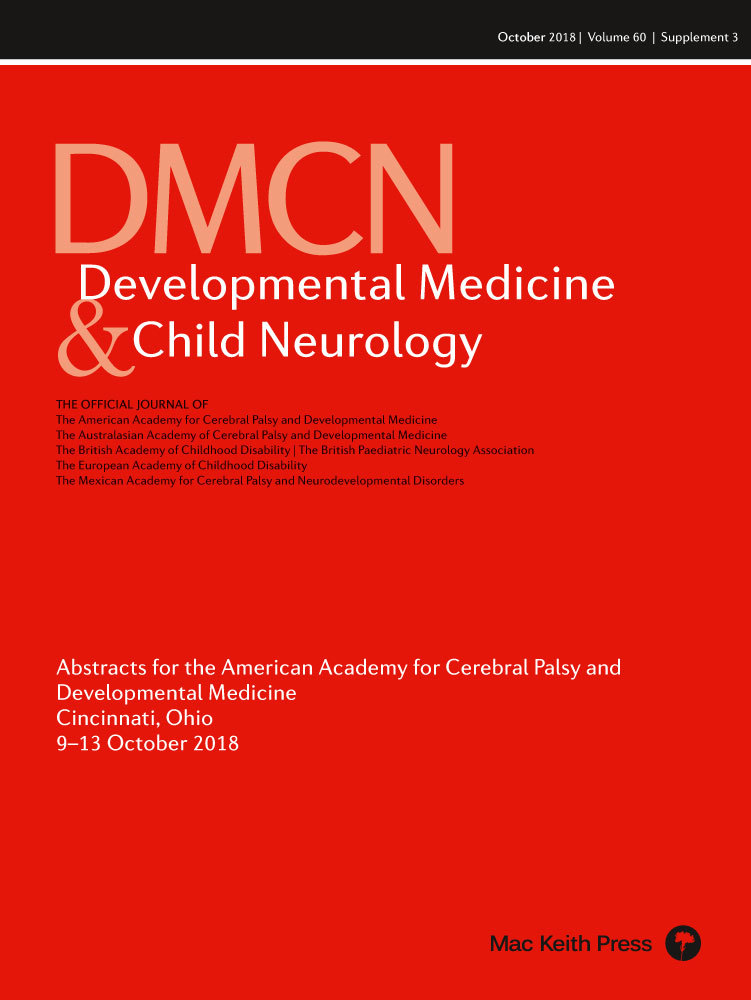The odds of surgical outcomes persisting over time
J2
M Gannotti1, G Gorton2, M Negrut3
1Department of Rehabilitation Sciences University of Hartford, West Hartford, CT, USA; 2Shriners Hospitals for Children, Tampa, FL, USA; 3University of Hartford, West Hartford, CT, USA
Background and Objective(s): Limited information exists on the persistence of surgical outcomes from single event multilevel surgery (SEMLS) over time among individuals with cerebral palsy (CP). The persistence of impairment level outcomes for femoral derotational osteotomies (FDRO), tendo-achilles (TAL) and hamstring lengthenings (HSL) over time were assessed.
Study Design: Retrospective, longitudinal, cohort study.
Study Participants & Setting: Included all patients at tertiary care hospital with CP who underwent SEMLS from 1991 to 2013 including at least one of heelcord lengthening, hamstring lengthening, or femoral derotation osteotomy with pre operative and more than 1 post operative clinical and motion analysis evaluation.
Materials/Methods: Clinical exam results for anteversion (ANT, n=72), popliteal angle (POP, n= 300), and dorsiflexion with knee extension (DF, n= 274) were evaluated for more than 10° improvement after surgery post-operatively for 234 children (Mean age 10.2 years, SD 3.2 years, 151 males, Gross Motor Functional Classification System levels (GMFCS) I (n=8), II (n=113), III (n=105), and IV (n=6); and for maintenance of improvements of at least 10° greater than pre-surgical status.
Results: Comparison of pre and post surgical range of motion using paired t-tests were all statistically significant [ANT (Pre 31.2, SD 17.9; Post 17.1, SD 8.1; p<0.001); POP (Pre 64.2, SD 11.3; Post 44.2, SD 14.2; p<0.001); DF (Pre -7.0, SD 10.7; Post 9.9, SD 8.6; p<0.001)]. Mean follow up time was 62 months for ANT; 27 for POP; 43 for DF; total follow-up in person-years was 254 for ANT; 399 for POP; 557 for DF. Median persistence of correction in months was calculated using Cox Proportional Hazards with age and GMFCS level as covariates when they had a significant effect on persistence. Median persistence of corrected ANT was 66 months [95% CI 47,84], with no effect of age or GMFCS level. In children GMFCS I-II, median persistence of POP outcomes was 39 months [95% CI 26,51], and 79 months [95% CI 60,98] for TAL at the mean age of 10 years surgery. In children GMFCS III-IV, median persistence of POP outcomes was 58 months [95% CI 45,72], and 59 months [95% CI 44, 74] for TAL. Age was a significant factor only for TAL and increased persistence by 9% (95% CI 2,16) per year with increasing age.
Conclusions/Significance: Surgical outcomes persisted for less than 5 years for POP, 5–6 years for TAL, and 7 years for ANT for 50% of the sample. Impairment measures of surgical outcomes in this sample suggest that increasing GMFCS level influences the persistence of impairment level surgical outcomes; POP persists longer while TAL has shorter persistence with increasing GMFCS level. Age at time of surgery affects the persistence of TAL but not POP. Cost benefit ratio of surgery and persistence of outcomes should be evaluated in context of gait kinematic changes as well. This information can be used to communicate expectations and discuss the expected benefit of surgical outcomes of SEMLS with families of children with CP.





